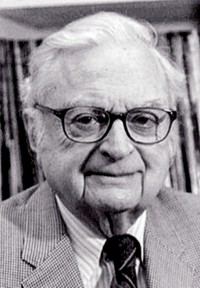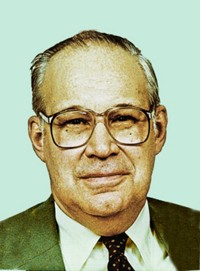Advertisement
Grab your lab coat. Let's get started
Welcome!
Welcome!
Create an account below to get 6 C&EN articles per month, receive newsletters and more - all free.
It seems this is your first time logging in online. Please enter the following information to continue.
As an ACS member you automatically get access to this site. All we need is few more details to create your reading experience.
Not you? Sign in with a different account.
Not you? Sign in with a different account.
ERROR 1
ERROR 1
ERROR 2
ERROR 2
ERROR 2
ERROR 2
ERROR 2
Password and Confirm password must match.
If you have an ACS member number, please enter it here so we can link this account to your membership. (optional)
ERROR 2
ACS values your privacy. By submitting your information, you are gaining access to C&EN and subscribing to our weekly newsletter. We use the information you provide to make your reading experience better, and we will never sell your data to third party members.
Environment
Obituaries
by Rachel Petkewich
December 18, 2006
| A version of this story appeared in
Volume 84, Issue 51
John F. Bonner Jr., 89, a biochemistry professor emeritus at Indiana University School of Medicine, Indianapolis, died on Nov. 10.
He graduated in 1938 from Rensselaer Polytechnic Institute, in New York, with a bachelor's degree in chemical engineering. In 1940, he received his master's degree in biochemistry and in 1948, a doctorate in biophysics from the University of Rochester, also in New York.
During World War II, Bonner worked on the Manhattan Project, participated in atomic bomb tests in Nevada and at Bikini Atoll, and continued at Rochester as an assistant professor of radiation biology.
Starting in 1955, he worked in the Medical Research Branch of the Atomic Energy Commission (AEC), where he rose to acting chief. He joined Indiana University School of Medicine in 1961. During this period, he served as consultant to AEC. In 1967-68, Bonner was appointed as a Public Health Service Special Fellow, and he was a visiting professor of molecular and genetic biology at the University of Utah, Salt Lake City. At Indiana, he was granted professor emeritus status in 1983. He retired in 1986.
Bonner is survived by Nancy, his wife of 31 years; Geraldine, his first wife of 29 years; three children; two stepchildren; a sister; and four grandchildren. He was preceded in death by a son and two siblings. An emeritus member, he joined ACS in 1951.
Ronald L. Brodzinski, 65, a nuclear chemist who spent 40 years at Pacific Northwest National Laboratory (PNNL), died unexpectedly on Oct. 31.
Colleagues say he contributed much by serving as a role model for many technical staff over the years and by providing significant leadership on national and international projects.
Brodzinski received his B.S. in chemistry from Purdue University. After he completed his Ph.D. in nuclear chemistry there in 1967, he immediately joined PNNL. In 1989, he attained the rank of laboratory fellow, the lab's highest scientific level.
Brodzinski's early work centered on the physical interactions of fast neutrons with critical construction materials in thermonuclear reactors. He was a principal investigator for the National Aeronautics & Space Administration during the Apollo missions to the moon.
His novel measurements included reconstruction of the radiation dose delivered by the Hiroshima bomb during World War II and a unique radiation detection tool that used scintillating glass drawn into optical fibers to detect neutrons in various applications.
His 25-year search for neutrinoless, double-β decay in 76Ge resulted in background reductions of six orders of magnitude in high-resolution germanium γ-ray spectrometers.
He pioneered the use of pulse-shape analysis and signal processing to identify source, type, and location of energy deposition events in germanium detectors. His detector advancements enabled him to make the first direct measurements of two-neutrino, double-β decay in 76Ge and 100Mo.
Brodzinski joined ACS in 1971, was a lifetime member of the Masonic Family, and an avid hunter. For the past 22 years, he and his family have run the Seth Ryan Winery in Washington state. Two of Brodzinski's sons and one grandson died before him. He is survived by his wife, Jo; a daughter and a son; and four grandchildren.
Robert F. Doerge, 91, a pharmacist, medicinal chemist, and educator, died on Aug. 20 following a brief illness.
Doerge received a B.S. degree in pharmacy in 1943 and a Ph.D. in pharmaceutical chemistry in 1949 from the University of Minnesota.
He began his professional career as an assistant professor in the School of Pharmacy at the University of Texas, Austin, before becoming a research chemist with the former Smith, Kline & French Laboratories in Philadelphia. Beginning in 1960, he returned to academia as professor and chair of the pharmaceutical chemistry department in Oregon State University's College of Pharmacy. Prior to his retirement as professor emeritus in 1981, he was the assistant dean.
Doerge's initial publications included the synthesis of anticonvulsants. At Smith, Kline & French, his publications included vitamin stability; at Oregon State University, his papers focused on the heterocyclic phenylindolizines.
Doerge was a volunteer abstractor for Chemical Abstracts Service. He also authored chapters for, coedited, and edited various editions of "Wilson and Gisvold's Textbook of Organic Medicinal & Pharmaceutical Chemistry." On several occasions, his students and the university recognized his skill and dedication in the classroom with teaching awards.
Doerge is survived by his wife, Suzanne; five sons; and 15 grandchildren.
Brennie E. Hackley Jr., 82, chief scientist and scientific adviser to the commander of the U.S. Army Medical Research Institute of Chemical Defense, Edgewood Area, Aberdeen Proving Ground, Md., died on Nov. 5.
Born in Roanoke, Va., he earned a B.S. in chemistry from Wilberforce University, in Ohio, in 1946. At the University of Delaware, he completed an M.S. in 1954 and a Ph.D. in chemistry in 1957.
Hackley's publications and patents contributed significantly to the development of medical antidotes for chemical warfare agents. TMB4, one of the compounds Hackley synthesized, was designated as standard U.S. Air Force therapy for treating chemical exposures. TMB4 was also used by several Eastern bloc nations, including Russia.
He taught, served on numerous panels as a subject-matter expert, and chaired the Task Force on Long-Term, Low-Level Effects of Chemical Warfare Agents as well as a NATO study group on skin toxicity.
Hackley received numerous honors and commendations during his 57 years of government service. He posthumously received the medal for Decoration for Exceptional Civilian Service. Retired from the military as a colonel with 31 years of enlisted and officer service, Hackley was buried at Arlington National Cemetery.
Hackley joined ACS in 1950.
Obituaries are written by Rachel Petkewich. Obituary notices may be sent to r_petkewich@acs.org and should include detailed educational and professional history.






Join the conversation
Contact the reporter
Submit a Letter to the Editor for publication
Engage with us on Twitter